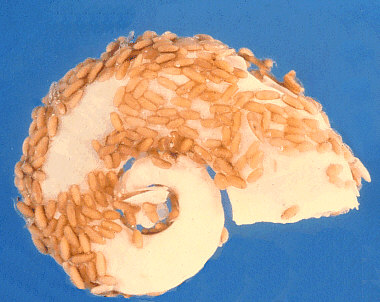

DescriptionThe genus Halobates contains over 40 species, 5 of which are pelagic and live on the surface of the open ocean. Like other gerrids, the sea skaters are hemimetabolous and have a life cycle consisting of the egg, 5 nymphal instars, and the adult. The adults are sexually dimorphic with the female usually being the larger of the sexes. |
Food and feedingLike all water strider (Geridae) species, Halobates are predaceous. They typically feed by liquefying the muscles and the internal organs of their prey. The diet of the open ocean species is not fully known. They have been observed feeding on zooplankton, dead jellyfish, fish eggs and larval fish trapped on the ocean surface. They have never been observed breaking the water surface to feed: they do not dive. |
ReproductionAlthough they spend their entire lives on the ocean, Halobates
requires floating objects on which to place their eggs. The objects include
sea bird feathers, floating seashells, pieces of wood, plastic and tar-lumps.
Often, oviposition sites are limited, leading to large numbers of eggs
being crowded onto small objects. |
 |
 |
Eggs on tailfeathers of a dead sea bird |
Eggs on a floating Spirulla shell |
DistributionHalobates are found around the world near the equator and can occur in large numbers. See their distribution |
Move closer to shore in search of reliable oviposition
sites.